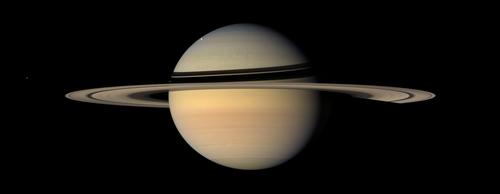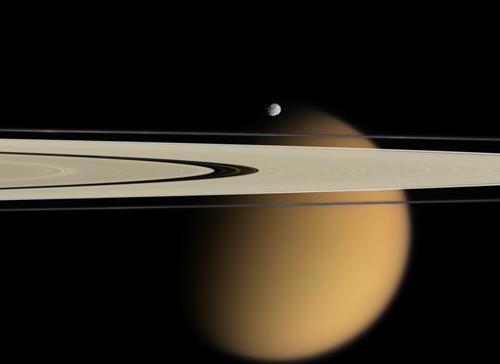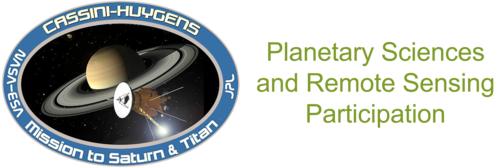Department of Earth Sciences
Service Navigation
Mission: Cassini-Huygens | Experiment: ISS
The international Cassini-Huygens mission was a joint project of NASA, ESA and ASI, the Italian Space Agency. While NASA already successfully sent the Pioneer and Voyager probes to the Saturnian system between 1979 and 1981, Huygens, the landing capsule built by ESA, has been the first European contribution to a space mission to the Outer Solar System. The orbiter Cassini was equipped with numerous observation instruments, including cameras, radar- and radio wave experiments.
Cassini-Huygens was launched on October 15, 1997 in Cape Canaveral, Florida and reached the orbit of the second largest planet of our solar system in 2004, after a journey of nearly 7 years and 3.5 billion kilometers. With a 90-minute burn of the onboard rocket engine, the engineers at the Jet Propulsion Laboratory (JPL) put the six-ton spacecraft into orbit around Saturn.
Cassini itself orbited Saturn for 13 years and investigated the magnetosphere of the planet as well as its rings and the more than 60 big and small moons. Gravitational waves within Saturn's rings, lakes of methane, ice eruption fountains, and other surface processes on the icy moons - Cassini has made many new discoveries throughout the mission and provided an immense amount of scientific data and images.
On board the Cassini orbiter was amongst other instruments the Imaging Science Subsystem (ISS), a camera for images within the spectral range of the near-ultraviolet (UV), the visible light and the near-infrared (NIR). In cooperation with the German Aerospace Center (DLR) in Berlin-Adlershof and supported by the National Space Administration, the Planetary Sciences and Remote Sensing Group at FU Berlin was engaged in the planning and evaluation of image data of the Saturnian moons.
The mission, originally planned to last until 2008, went so successful that it was extended twice and did not end until September 2017. Almost 20 years after launch, Cassini was going for a controlled crash with the ring-planet on September 15, 2017. The spacecraft plunged into the atmosphere of Saturn and burnt up there.
RELATED LINKS MISSION CASSINI-HUYGENS
FINANCIAL SUPPORT • PROJECT FUNDING
• Reference number 50 OH 1503
• Funded by the Space Administration of the German Aerospace Centre (DLR) with means of the Federal Ministry for Economic Affairs and Energy.
• Last Term: Jul 01, 2015 - Dec 31, 2019


